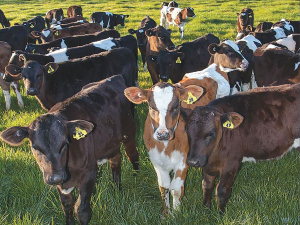Three ways you can prepare for the onrush of the calving season will shore up your abilities, says DairyNZ.
First, prepare what you can beforehand.
Second, look after yourself during calving.
Third, work on open and clear communication with everyone around you.
It’s important to prepare beforehand: think about what you can do now to ensure you don’t have to think about it through calving.
Stock up on nutritious food to last six weeks: before calving prepare extra food and freeze it.
Tell your friends and family you will be busy for six to eight weeks, and do a budget and automate any bill payments you can.
It’s also crucial that you look after yourself during calving.
Eight hours sleep each night should be a priority. A lack of sleep causes problems.
Eat healthy, balanced meals often each day: keep snacks in the shed or on the bike so you can snack as you go.
Drink about eight cups of water a day.
Lack of water can sap your energy.
“Tell someone if you’re struggling because it’s a team effort.
“Communicate regularly and honestly,” says DairyNZ.
“Know how your team communicates on your farm -- phones, radios, team meetings or a combination. Put yourself in the other person’s shoes when considering how to bring up an issue.
“Remember you can control how you react to situations. Try to keep control of your emotions. Getting angry will not help anyone.”
Checking springers
Quietly walk through the springer mob. When cows are feeding is best, not when cows are hungry and are looking to be moved. Look for cows showing signs of labour.
Regularly start before calving so cows get used to you walking around them. Check with your manager for the farm policy on checking springers. It should be at least four times per day.
Thoroughly check all areas of the paddock and, depending how good the fencing is, also check the neighbouring paddocks. Check drains, hollows, long grass, hedges – anywhere a calf could be hiding.
Observe closely and identify any issues. Check with your manager on how to intervene if you must.
Record the number of any cow or heifer starting to show signs of calving, already calved or behaving differently from other cows. Report this.


















